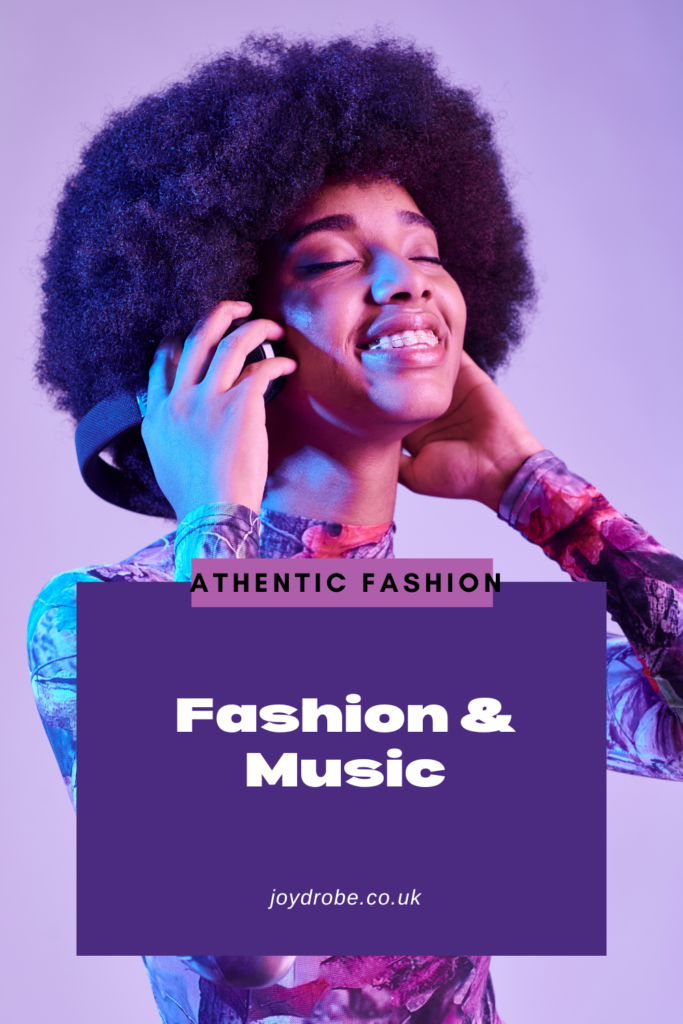The Harmonious Fusion of Fashion and Music: A Symphony of Style

Fashion and music, two powerful forms of self-expression, have always shared a symbiotic relationship. Their connection goes beyond the superficial, creating cultural movements and defining eras. From the glitzy rock ‘n’ roll of the ’70s to the minimalist chic of modern electronic music, fashion and music influence each other in dynamic and exciting ways. This blog post delves into how these two creative worlds intertwine, shaping trends and inspiring generations.
The Rock ‘n’ Roll Revolution
The 1970s marked a significant period where music and fashion collided spectacularly. Rock ‘n’ roll wasn’t just a genre; it was a lifestyle. Icons like David Bowie, Mick Jagger, and Freddie Mercury weren’t just known for their music but also for their bold fashion choices. Bowie’s alter ego, Ziggy Stardust, was a fashion statement with his androgynous, glittery outfits that defied gender norms and celebrated individuality. The fashion of this era was characterized by flamboyant costumes, leather jackets, and eccentric accessories, creating an image that resonated with the rebellious spirit of the music.
Punk Rock and DIY Fashion
As the 1980s rolled in, punk rock took center stage, bringing with it a distinct fashion aesthetic. Bands like The Ramones, Sex Pistols, and The Clash were at the forefront of this movement, which was as much about attitude as it was about music. The punk look was raw and unpolished, featuring ripped jeans, leather jackets, and band t-shirts. Safety pins, studs, and DIY elements became fashion staples, reflecting the anti-establishment ethos of the punk movement. This era showed how music could directly influence street fashion, encouraging fans to adopt a similar style.
Hip-Hop and Streetwear
The relationship between fashion and music took a new turn with the rise of hip-hop in the late ’80s and ’90s. Artists like Run-D.M.C., Tupac, and Notorious B.I.G. were not just musicians but style icons. Run-D.M.C.’s signature look—Adidas tracksuits and sneakers—became a global trend, blurring the lines between athletic wear and street fashion. Hip-hop culture brought forth an era of oversized clothing, gold chains, and branded attire. This movement laid the groundwork for contemporary streetwear, with brands like Supreme and Off-White drawing heavily from hip-hop influences.
The Pop Princess Era
Pop music has always been a breeding ground for iconic fashion moments. The late ’90s and early 2000s saw the rise of pop princesses like Britney Spears, Christina Aguilera, and Beyoncé. Their fashion choices often set trends and defined teen fashion. Britney’s schoolgirl outfit in “…Baby One More Time” and Christina’s chaps in “Dirrty” are memorable examples of how music videos became a platform for launching fashion statements. This era underscored the power of visual media in shaping fashion trends, as fans eagerly emulated their favorite pop stars.
The Indie and Alternative Scene
The early 2000s also witnessed the emergence of indie and alternative music, which brought a different fashion sensibility. Bands like The Strokes, Arctic Monkeys, and Florence and the Machine championed a more laid-back, eclectic style. Skinny jeans, vintage tees, and thrifted clothing became synonymous with the indie scene. This period highlighted the appeal of individuality and sustainability in fashion, as artists and fans alike embraced a mix-and-match approach.
EDM and Futuristic Fashion
Electronic Dance Music (EDM) has carved out its own niche in the fashion world. The rave culture associated with EDM is vibrant and futuristic, featuring neon colors, holographic fabrics, and bold accessories. Festivals like Coachella and Tomorrowland have become fashion showcases, where attendees push the boundaries of creativity and self-expression. The influence of EDM has permeated mainstream fashion, inspiring designers to experiment with unconventional materials and designs.
The Modern Era: A Blend of All
Today, the lines between music genres and fashion styles are more blurred than ever. Social media platforms like Instagram and TikTok have democratized fashion, allowing trends to spread rapidly and globally. Artists like Billie Eilish, with her signature oversized outfits, and Harry Styles, known for his gender-fluid fashion, exemplify the modern fusion of music and style. Fashion brands frequently collaborate with musicians to create exclusive lines, underscoring the deep-rooted connection between these two worlds.
Conclusion
The interplay between fashion and music is a testament to their shared essence of self-expression and creativity. Each genre of music brings with it a unique fashion narrative, influencing and being influenced by the cultural zeitgeist. As we move forward, this harmonious relationship will continue to evolve, reflecting the ever-changing landscape of art, culture, and individuality. Whether it’s through the rebellious spirit of punk, the flashy appeal of hip-hop, or the futuristic vibes of EDM, fashion and music will always create a symphony of style that resonates with the soul.